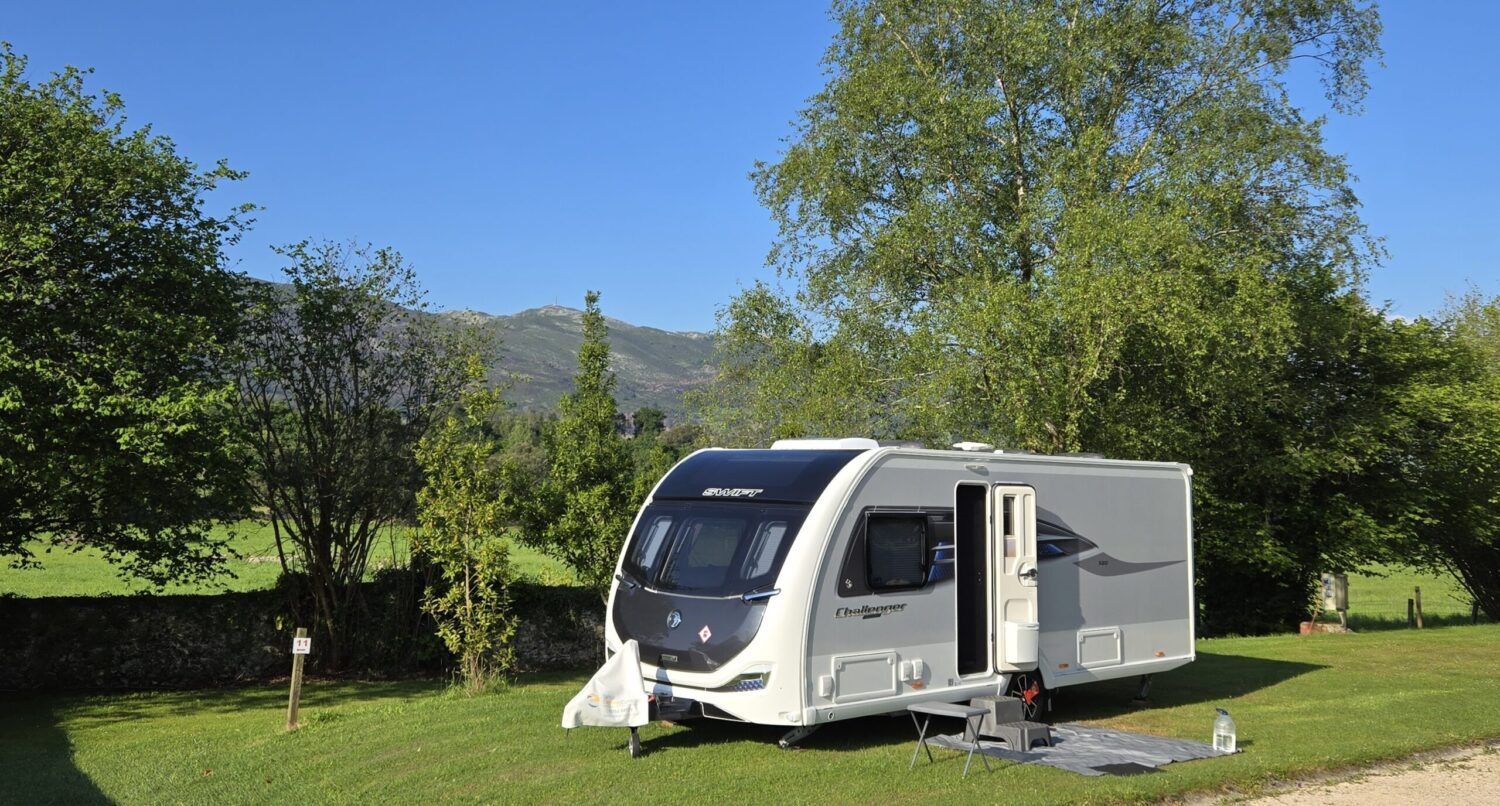Well, not exactly nowhere, but the road is certainly a slow one! We have decided to get a bit more “close and personal” with the high ground to the south. The Picos de Europa. Covering some 500 km², the peaks reach about 2,650 m. (Strictly speaking, the Torre de Cerredo reaches 2,649 m.) Situated approximately 30 km from the sea, the range extends about 40 km east to west. The main town of the area is Potes – and that’s where we are heading.
The last time we visited, the road from Unquera was terrible. It followed the River Deva, which forms the border between Cantabria and Asturias for part of it’s length. The road kept hopping from one province to the other and back again. Probably originally built by the Astures so they could get their oysters and octopus delivered from the coast. Every bridge required a lot of concentration. Two instant right angle bends onto and off each narrow bridge. Over-hanging rocky outcrops threatened to take the car’s roof off. Rocky ledges protruding into the carriageway at random intervals just waiting to dent a door or two.
In the wider sections, there was “easily” room for two cars to pass. A car and a truck – possible at slower speed. Two trucks meeting caused an instant traffic jam! The trip took ages. Three years later, the road is undergoing massive improvements. The river side of the original road is being removed and replaced (in a widened format) on a more or less continuous, overhanging, cantilevered structure. This requires a lot of the old, narrow road being removed, a great deal of drilling and piling, millions of tonnes of, reinforced concrete laid and a top coat of asphalt added – for a distance of about 17.2 km!
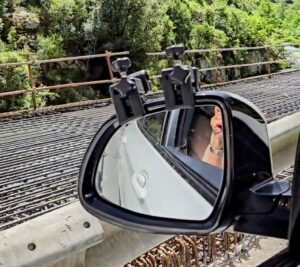
Here’s a section ready for concreting. Luckily, we won’t be here tomorrow!
We hadn’t even got into the really narrow section before we joined a communal picnic while a mixer lorry load of concrete was laid. That stopped us in our tracks for at least 20 minutes, but some at the front of the queue had their deck chairs out, sunbathing. They had been there a lot longer than us!
Work is in progress at eight or nine sections of variable length ranging from a few hundred metres to maybe a kilometre. Each of these is reduced from two narrow lanes to one. In between, on the better parts of the old road, the two narrow lanes remain operational. It is true to say there are stretches of “proper” road where works have been completed. (The first two sections – about one km in total – were completed in 2023.) These are adequately wide and straight(ish). With smooth road surface, painted lines and barriers to keep us out of the river. Presumably they are tackling the worst bits first! But guess what, the Spaniards must have visited Australia to observe their traffic control systems. However, they have adopted a different form of roadworks etiquette. Posted at each end of the “active” section they have a man with a radio and a stop sign (and a car in case of inclement weather!). But no “go” or “go slow” signs!
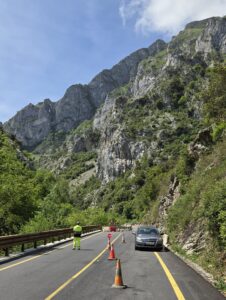
So our progress is limited. Two narrow lanes with random rock protuberances. Stop for 10 minutes. Go really slow past all the workmen on a narrow single track section before stumbling back onto the two narrow lanes. To be fair, as I said, there were a few sections where the improvements have been completed. Here it was possible to get up to 50 kph (briefly).
We decided to make a deviation. There is (allegedly) a restaurant in the hills off the road to the right. Just beyond a village called San Estoban. The village is only about four kilometres from the main road. Excellent. We will get lunch and think about not visiting Potes. We managed three hairpin bends in the first 200 m of TRULY single lane road with no passing places and no barriers at all. Going up we would at least be on the “inside” of the road, but the return trip would have been truly horrible if we met anything bigger than a rabbit. So, about turn in a tiny space and back down to the “motorway”. Just time for a photo …
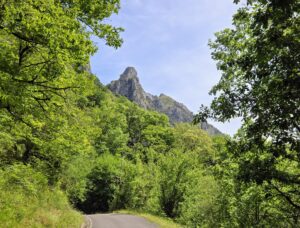
Later, back on the N-621, we stopped at La Hermida for a coffee and a couple of (medicinal) brandies!
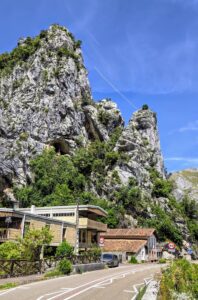
The traffic through the village was really odd. Nothing for ten minutes, then a pulse of maybe 20 cars and 200 motorbikes. Then nothing followed by a batch of vehicles going the other way. And that white line joining the two peaks in the photo above is not a vapour trail – it’s a ladder!!!
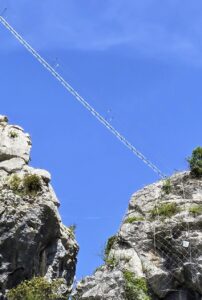
In the original photo, it’s also just possible to make out a horizontal bridge and safety wire below (between the little bush on the left and the dark patch on the right. This would be the access route to the ladder!) We are talking serious via ferrata stuff here. This particular route extends for 3.7 km and has 370 m of climb. Not for me. I’m enjoying the drive up the valley immensely all of a sudden! Road works? What road works?
The whole road improvement project is truly a pharaonic undertaking involving hundreds of workers. The road is going to be “fabulous” when completed. Until then, don’t forget to pack a drink, lunch and possibly a porta potty! Luckily, the Spanish eat lunch really late. We got ours in Potes at about 3.30 pm. And this was our view from the restaurant. Looking upstream …
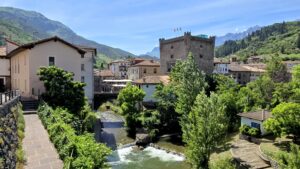
… and down later.
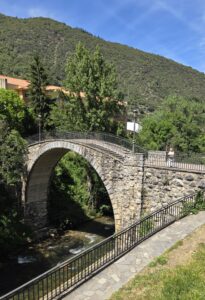
We just had time to check out one of the local campsites. Jammed! With everyone trying to work out how best to get back to the coast! “Oh hell, let’s just stay another week!”
We made it back as all the workers were packing up. They were about to activate traffic lights to control the flow of vehicles. Good luck with that! We are out of here!
